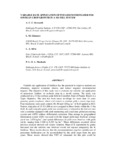Por favor, use este identificador para citar o enlazar este ítem:
http://www.alice.cnptia.embrapa.br/alice/handle/doc/883514Registro completo de metadatos
| Campo DC | Valor | Lengua/Idioma |
|---|---|---|
| dc.contributor.author | BERNARDI, A. C. C. | pt_BR |
| dc.contributor.author | GIMENEZ, L. M. | pt_BR |
| dc.contributor.author | SILVA, C. A. | pt_BR |
| dc.contributor.author | MACHADO, P. L. O. A. | pt_BR |
| dc.date.accessioned | 2011-04-09T14:48:32Z | - |
| dc.date.available | 2011-04-09T14:48:32Z | - |
| dc.date.created | 2011-03-29 | pt_BR |
| dc.date.issued | 2010 | pt_BR |
| dc.identifier.citation | In: INTERNATIONAL CONFERENCE ON PRECISION AGRICULTURE, 10., 2010, Denver. Proceedings... Denver: Denver Tech Center, 2010. | pt_BR |
| dc.identifier.uri | http://www.alice.cnptia.embrapa.br/alice/handle/doc/883514 | pt_BR |
| dc.description | Variable rate application of fertilizer has the potential to improve nutrient use efficiency, improve economic returns, and reduce negative environmental impacts. The objective of this study was to evaluate the variable rate application of potassium fertilizer to soybean crop in a no-till system. The study was conducted on a 13-ha soybean grain field in Carambeí, State of Paraná, Brazil in a Typic Hapludox. The area has been under no-tillage for more than 10 years growing grains (soybean, wheat and maize) in rotation with a cover crop (oat). Four treatments were used: control, 40, 80 and 120 kg ha-1 of K2O applied as KCl. Narrow strip plots of 18 X 1,000 m were assigned in three blocks within the 13-ha field. In each strip plot grain yield was continuously evaluated at the harvest time with a combine equipped with yield monitoring and a real-time global positioning system unit (GPS) without differential correction. Data storage in geographical information system (GIS) was used to fit the kriged yield map. Soybean average yield was 3,838 kg ha-1, and spatial differences in yield were observed with grain yields ranging form 2,100 to 6,583 kg ha-1. These differences occurred where previous analysis showed soil texture variation. Maps of K exportation by grains indicated that the uniform rate fertilizer would not replace adequately the K fertilizer. These results showed that the recommendation map for variable rate of potassium fertilization can be accomplished by the yield maps from the past years. These results showed that VRT of potassium for this plot could be performed based on yield maps, and it could be used in reducing yield variability and maintaining profitability while optimizing K applications. | pt_BR |
| dc.language.iso | por | pt_BR |
| dc.rights | openAccess | pt_BR |
| dc.title | Variable rate application of potassium fertilizer for soybean crop growth in a no-till system. | pt_BR |
| dc.type | Artigo em anais e proceedings | pt_BR |
| dc.date.updated | 2011-04-10T11:11:11Z | pt_BR |
| dc.subject.thesagro | Soja | pt_BR |
| dc.subject.thesagro | Plantio direto | pt_BR |
| dc.subject.thesagro | Potássio | pt_BR |
| dc.subject.nalthesaurus | Variable rate application | pt_BR |
| dc.subject.nalthesaurus | Soybeans | pt_BR |
| dc.subject.nalthesaurus | Potassium | pt_BR |
| dc.subject.nalthesaurus | No-tillage | pt_BR |
| dc.subject.nalthesaurus | Spatial variation | pt_BR |
| riaa.ainfo.id | 883514 | pt_BR |
| riaa.ainfo.lastupdate | 2011-03-29 | pt_BR |
| dc.contributor.institution | ALBERTO CARLOS DE CAMPOS BERNARDI, CPPSE; LEANDRO M. GIMENEZ, CSEM BRASIL-BELO HORIZONTE; C. A. SILVA, UFLA; PEDRO LUIZ OLIVEIRA DE A MACHADO, CNPAF. | pt_BR |
| Aparece en las colecciones: | Artigo em anais de congresso (CNPAF)  | |
Ficheros en este ítem:
| Fichero | Descripción | Tamaño | Formato | |
|---|---|---|---|---|
| 138.pdf | 600,76 kB | Adobe PDF |  Visualizar/Abrir |









